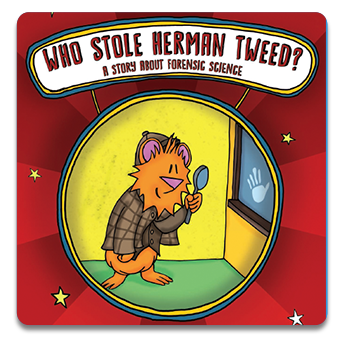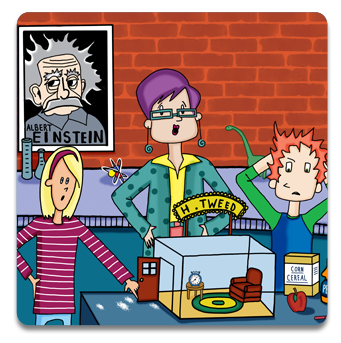Introduction
Herman Tweed fancies himself to be a great scientist. But, in this story, he's the one that's missing! Be a detective and figure out the mystery and, in this case, what the mystery powder really is!
Objectives
To demonstrate how to identify a “mystery” powder
Materials
• Baking soda
• Powdered sugar
• Zip-lock type sandwich bag
• Vinegar
• Magnifying glass
• Measuring cup
• Two small plastic bowls
• One plastic cup
• Teaspoon
• Eyedropper or pipette
• Black marker
• Pencil
Procedure
Put three or four teaspoons of the powdered sugar into the zip-type bag and label the bag “Mystery Powder” with the black marker. Put the bag aside until later in the investigation. Be sure students do not observe you doing this. Put one teaspoon of the additional powdered sugar in one of the plastic bowls and label as powdered sugar. Repeat this step with the baking soda in the second plastic bowl, labeling it as baking soda. Analyze both powders with the magnifying glass. Do they look the same? Put one-fourth cup of vinegar in the plastic cup. Use the dropper to add two to three drops of vinegar to each powder.
Observe what happens and document the results. Now it is time to analyze the mystery powder. Allow the students to observe the mystery powder with the magnifying glass. Use the dropper to drop two to three drops of vinegar into the bag and observe what happens. Compare the reaction of the mystery powder to the other reactions when vinegar was dropped in the bowls. Which one is the mystery powder?
Conclusion
The mystery powder is the powdered sugar. When the vinegar is dropped on the powdered sugar, a reaction does not occur. Vinegar and baking soda create a chemical reaction, and it will fizz and bubble as carbon dioxide gas is formed. Comparing test results of known substances to unknown substances can help forensic scientists identify unknown substances.

